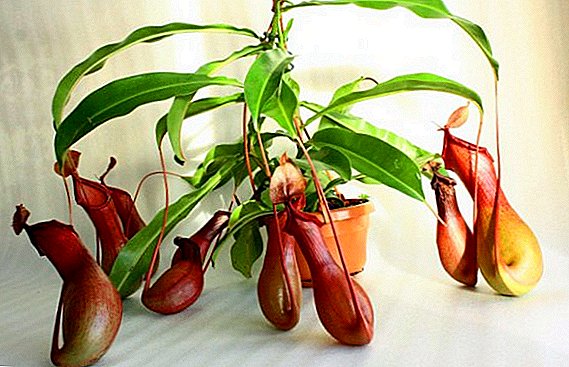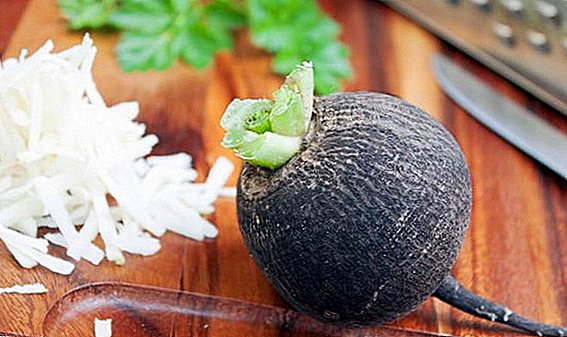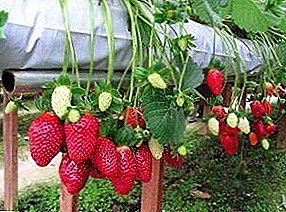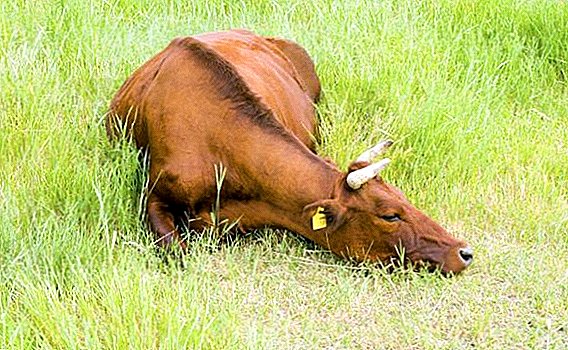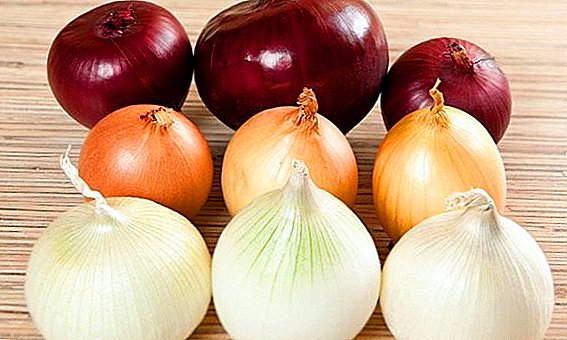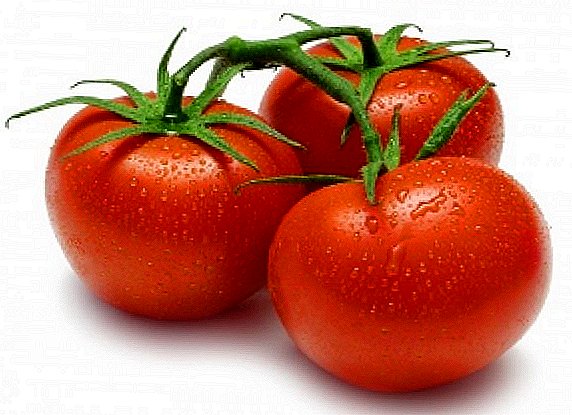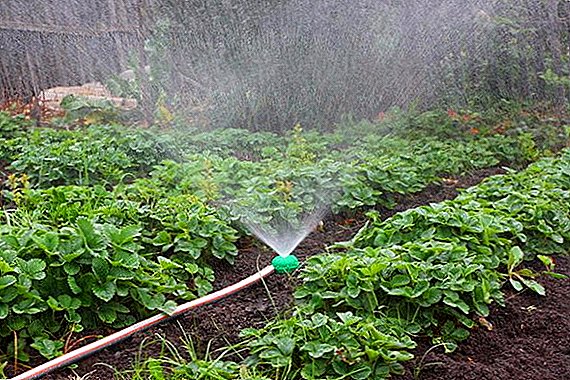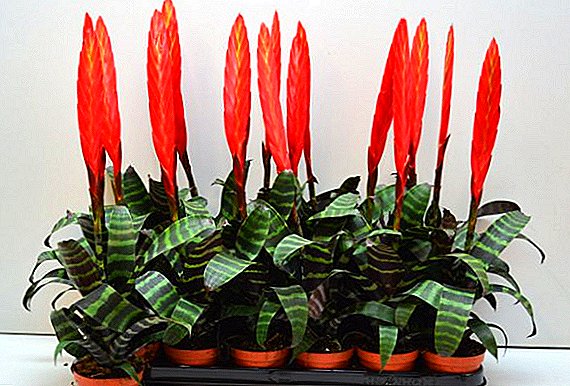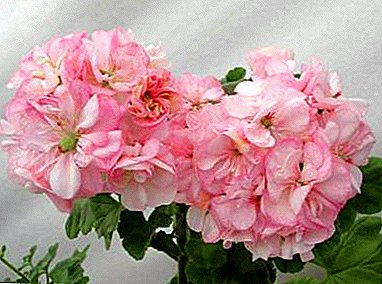
Pelargonium Pink stands out among other varieties of this plant. Pink is characterized by pink colors of different shades, depending on the variety.
The article will talk about the botanical description, how to properly care for the plant, as well as reproduction.
We will also learn how to deal with pests that can attack our pink beauty.
Botanical description, history and approximate cost
A distinctive feature of all Pelargoniums are the shapes of their inflorescences. Petals from them acquire a longitudinal shape. However, the two upper petals are located separately; over time, they slightly merge with each other. The remaining three petals remain at the bottom, they are evenly spaced relative to each other.
On plants of natural origin, flowers are quite simple in structure and to the touch. But among the hybrid varieties there are also terry, besides, they can be of the most diverse form. Flowers gather in inflorescences, which in their form resemble umbrellas.
 Leaf plates in their form, as a rule, ivy-shaped, sometimes you can find leaves with jagged edges. Much less common leaves are fern-shaped or with dissected ends. The color of the sheet plates is unique: it is not only monochromatic, but also two- and even three-colored.
Leaf plates in their form, as a rule, ivy-shaped, sometimes you can find leaves with jagged edges. Much less common leaves are fern-shaped or with dissected ends. The color of the sheet plates is unique: it is not only monochromatic, but also two- and even three-colored.
Largely all pelargoniums come to us from the republic of south africa. These plants got to Europe in the 17th century. The first country in which the Pelargonium appeared was Holland. There this flower was brought by local botanists as a medicine.
The described plant is sold in stores in several forms:
- seeds (the price of one sachet will fluctuate about 100 rubles);
- small cuttings (you can buy them for 100-200 rubles);
- ready flowering plant (its cost is about 300 rubles).
Varieties with photos
Below you can see the description and photos of popular varieties of pelargonium.
Chart
This variety belongs to the ivy species because of the shape of their leaf plates. The second name for the ileum - shield (or Ivy). In appearance, the leaves resemble maple, but Pelargonium leaves more smooth, pentagonal.
Sheet-like plates on top are covered with a waxy bloom, they are very dense to the touch, fleshy, and glossy in appearance. Very often, due to this kind of leaves (especially its glossiness), passersby take Pelargonium as an artificial plant. The shade of the leaves is lime, but very bright and saturated.
Pelargonium Pink refers to ampelous flowers, its stems are very thin and long. Therefore, Pink is ideal for growing on the balconies, in the gazebos, as well as hanging pots.
Buds rich crimson hue. They stand out very clearly against the rest of the green part of the plant. The size of the flowers is very large. Petals of buds are very terry, are located close to each other, therefore from afar they resemble peonies. The petals on the reverse side are much paler, so it seems that the bottom of the flowers seem to be lined. All this in total creates the effect of overflows.

Pandora
This species of flowers are very simple in appearance and to the touch. Nothing special stand out. However, a remarkable form is that all buds are assembled into. They look like a tulip, not even a single tulip, but a bouquet of miniature flowers, and some compare this inflorescence with a glass.
Leaf plates resemble oyster shells - they are semicircular with small notches. The color of the leaves is green, bright, but with a lack of light, white streaks begin to appear. Pandora has a very interesting reaction to a hot climate - it doesn’t appear pink flowers, but light red ones.

Pink
This variety can not boast of any unusual shade of buds, nor any unique structure, but Pink is famous for its unique aroma, which it radiates almost constantly.
Essential oil is obtained from this type, which is subsequently used in the manufacture of cosmetics, in particular perfumes. The most actively used Pelargonium Rose essential oil is France, the world capital of perfumery.

How to plant correctly - rules and tips
Landing instructions
The described plant refers to species that simply do not tolerate excessive moisture in the soil and in the air. therefore the most important task of the grower before planting is to ensure the drainage layer.
So, how to plant Pelargonium?
- Pour a drainage layer 2-3 cm high on the bottom of the pot.
- Then fall asleep in advance prepared soil.
- A small handle is placed in the pot.
- For a start it is better to give preference to small containers. So the plant will bloom faster and more abundantly.
- From above cover with a transparent glass jar. This will ensure optimum moisture levels.
Reference! Soil usually get ready. But you can cook it yourself. To do this, take in equal shares turf and leaf land, as well as peat and coarse sand.
Choice of location and lighting
 Pelargonium is a very light-loving species. In the absence of light, this plant will no longer produce essential oils, stop growing and bloom. Light should fall on the flower for at least 16 hours a day. For the location of the Pink is better to choose the southern and eastern sides of the room. If necessary, experienced growers use fitolampy.
Pelargonium is a very light-loving species. In the absence of light, this plant will no longer produce essential oils, stop growing and bloom. Light should fall on the flower for at least 16 hours a day. For the location of the Pink is better to choose the southern and eastern sides of the room. If necessary, experienced growers use fitolampy.
The soil must necessarily pass air and water. Since the stagnation of fluid in the substrate will cause rotting of the roots. Acidity of the soil should be neutral.
Care instructions
- Temperature. Pelargonium is a very thermophilic plant. Therefore, the optimum temperature should vary between 25-27 degrees.
- Air should not be humidified too often. It is better if the level of humidity will be kept at 60%, not more.
- The soil should not be clogged.
- Watering. This plant does not tolerate much water in the substrate. Therefore, do not moisten it too often. You need to wait until the soil dries completely before a new watering. The optimal moisture regime is once every 10 days.
- In winter, the frequency of irrigation can be reduced to once every two weeks.
- Fertilizers are chosen with a high content of phosphorus. It is better not to choose organic complexes, Pelargonium reacts poorly to them.
- Flowerpot should choose not very big. In a wide pot the plant will grow only in the area of the root system.
Diseases and pests
The most dangerous disease for Pelargonium is rotting of the rhizomes and the stem. Most often this is due to the constant waterlogging of the soil. You can notice the rot on the softened parts of the plant. In this case, it is necessary to immediately treat the whole plant with antifungal preparations, and not only the flower itself is treated, but also the soil in which it grows.
Important! In no case will such a pelargonium be grafted.
Sometimes the plant is attacked by gray mold, its negative impact is directed to the leaves and buds. In this case, Pelargonium is isolated from other colors and sprayed with fungicidal agents. Processing is carried out a couple of times with a break of a week. Do not forget to get rid of the affected areas of the plant.
Fight with aphids, mite and powdery mildew is necessary with the help of Bordeaux mixture or insecticides. Much less often whiteflies and caterpillars attack Pelargonium. In this case, use potash soda.
Breeding features
This flower propagates in a vegetative way:
- grafting;
- sheet plate;
- leaf fragment.
Leaf
 The reproduction process of a leaf plate and a piece of leaf is similar to each other.:
The reproduction process of a leaf plate and a piece of leaf is similar to each other.:
- The florist should choose a large healthy sheet without defects. Then cut the cuts with a sharp knife, as if dividing the sheet itself into triangular fragments.
- To prevent these cuts from rotting, they are powdered with ashes or activated carbon.
- Leaf platinum is slightly deepened into the ground and covered with a can until new leaves appear.
Cuttings
Young shoots are selected for planting.which, after cutting, are exposed to fresh air for drying. Pick up such cuttings, which will be at least three leaves.
You can put the cuttings in the water before new roots appear on them, or you can immediately plant them in the ground, but at the same time process them with a growth stimulator.
Seeds
There is also seed reproduction. It is not as fast as vegetative, but sometimes it is necessary to resort to this method of reproduction.
- For planting, seeds are sown on the ground, slightly smash them with earth.
- The soil is sprayed with a spray.
- Then cover the seed glass for a month.
- After this time, the first shoots will appear, which can already be swooping down.
Pelargonium varieties Pink is considered a female flower, so it is given to girls and women in recognition of its tenderness and romance.


